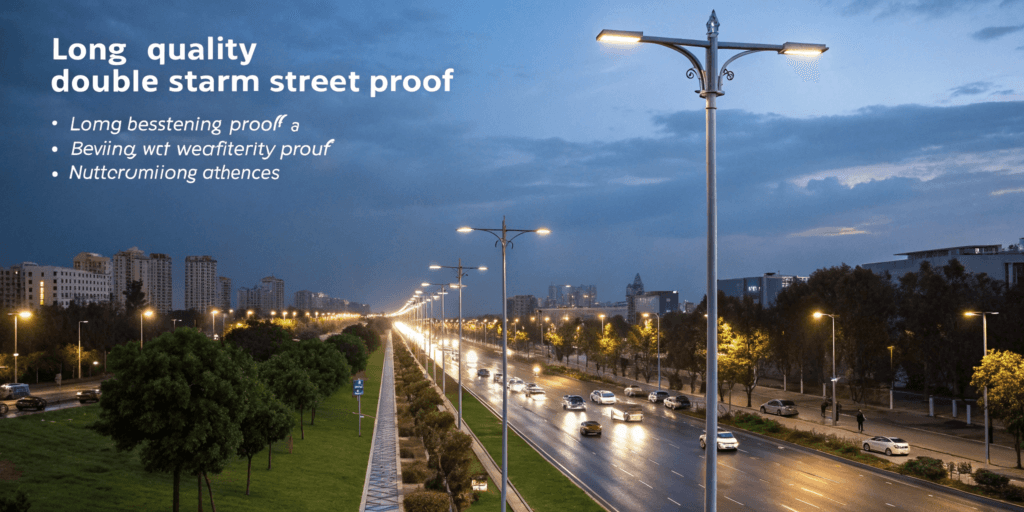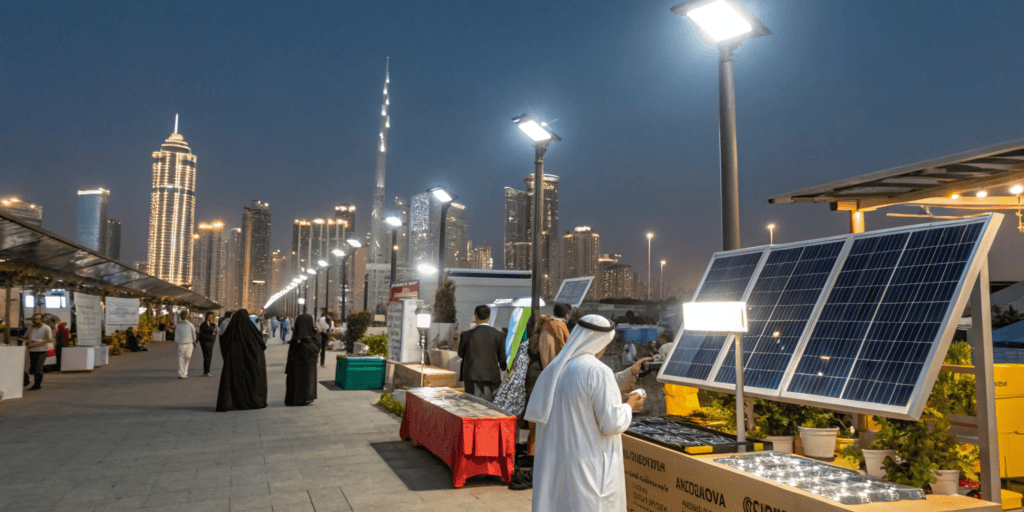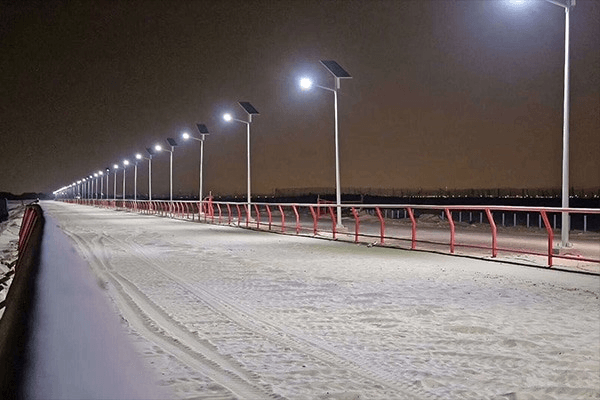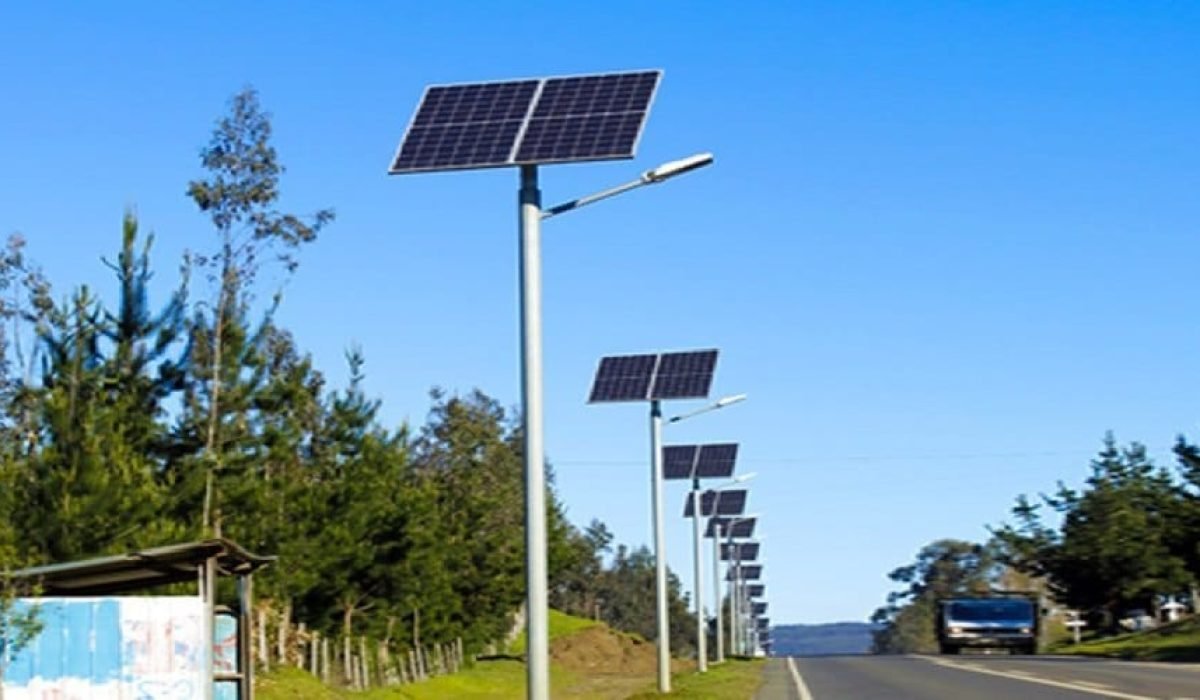Have you ever installed solar lights, only for them to break after just one rainy season? It's frustrating, but understanding the root causes can help prevent it from happening again.
The main reasons why solar lights fail after exposure to rain include water damage, poor waterproofing, and the use of cheap materials that can't withstand harsh weather.
Understanding these issues is crucial for making better choices when purchasing solar lights and ensuring they last through rainy seasons.
The Key Reasons Solar Lights Fail in the Rain

1. Water Damage to the Solar Panel or Battery
Water is one of the biggest threats to solar lights. When moisture seeps into the panel or battery compartment, it can cause severe damage.
Water can corrode the battery connections, damage the solar panel’s electrical components, and shorten the lifespan of your solar lights.
When water gets inside the housing, the battery can rust or leak, and the solar panel’s efficiency can be greatly reduced, leaving you with dim or non-functional lights.
Water damage happens when moisture enters the solar light’s casing, which is often not perfectly sealed. Once inside, the battery terminals or solar cells can rust and corrode. This corrosion can create short circuits or break the electrical connections, causing the light to fail completely. Additionally, solar panels can lose their ability to capture sunlight, reducing their energy efficiency. Over time, this affects the charging cycle, and the lights will no longer stay on as long as they should, or they may stop working entirely.
The battery is often the first part to be affected because it stores the energy generated by the solar panel. If moisture enters the compartment and contacts the battery, it can lead to corrosion of the battery terminals. The constant exposure to moisture and humidity leads to battery failure and decreased performance. If the solar panel gets wet, its efficiency can also drop, especially if it remains exposed to damp conditions for extended periods.
2. Weak or Insufficient Waterproofing
Not all solar lights are made equal when it comes to waterproofing. Insufficient protection is a common cause of failure after rain.
The quality of the waterproofing can vary greatly depending on the light’s design. Poor sealing can allow water to seep into the electrical components.
This is a serious issue, especially in areas with consistent rain or high humidity.
Waterproofing in solar lights is often rated using the IP (Ingress Protection) system. This rating determines how well the light can resist water and dust. A light with a low IP rating, like IP44, may only withstand light rain, but it won't hold up against heavy rain or water jets. On the other hand, a light with a higher rating, like IP65 or IP68, can withstand rain, jets of water, and dust, making it much more suitable for outdoor use.
Common mistakes in waterproofing include using cheap materials that wear out quickly or poorly sealed compartments that allow water ingress. Even high-quality lights can fail if their seals are not maintained, or if they are exposed to constant moisture. Therefore, checking the IP rating and construction quality of your lights is essential when selecting solar lights for outdoor use.
3. Solar Lights Not Designed for Harsh Weather
Not all solar lights are made to endure harsh weather conditions. Budget-friendly options might be tempting, but they often lack the durability to withstand prolonged exposure to rain.

Low-cost solar lights typically use weaker materials and components, making them more prone to damage when exposed to harsh weather conditions.
Choosing solar lights that are designed specifically for tough climates is essential for ensuring long-term durability.
Budget solar lights often skimp on quality to keep costs low. While they may work well in dry conditions, they are not designed to withstand heavy rain, humidity, or freezing temperatures. These lights may have poor waterproofing, weak batteries, and flimsy outer casings, making them more likely to fail in the rain.
In contrast, higher-quality solar lights are built to last, with better materials such as aluminum, stainless steel, or heavy-duty plastic. These materials are corrosion-resistant and can endure the elements better than cheaper alternatives. Additionally, lights designed for harsh weather often come with higher-quality batteries like Li-ion or NiMH that are more resistant to moisture and temperature fluctuations. If you're living in a region with frequent rains, investing in better-made solar lights will save you money in the long run.
4. Poor-Quality Batteries
One of the main culprits of solar lights failing after one rainy season is the battery. If your lights use cheap, low-quality batteries, they won’t last long in wet conditions.
Cheap batteries degrade quickly when exposed to moisture, reducing the performance and lifespan of your solar lights.
Low-quality batteries, often found in budget solar lights, cannot withstand the constant exposure to moisture. Batteries such as alkaline are particularly vulnerable, as they are prone to leakage and corrosion. In humid conditions, the performance of these batteries rapidly declines, leading to diminished capacity, shorter operational hours, or complete failure.
On the other hand, Li-ion and NiMH batteries are more weather-resistant and durable. These batteries are sealed more effectively and perform better in fluctuating temperatures and humidity levels. When purchasing solar lights, always check the type of battery used. A good battery will last longer, be more resilient to the elements, and ultimately provide better performance.
5. Faulty Sealing and Construction
Weak or faulty sealing is a common reason why solar lights fail after rain. If the battery compartment or solar panels are not sealed correctly, water can easily get inside.

Poor sealing allows water to enter the light housing, causing internal corrosion and electrical failure.
When sealing materials like O-rings, gaskets, or silicone seals are improperly installed or are of low quality, water will seep into the light. This can quickly lead to corrosion of the electrical components, such as wires, batteries, and connections. Cheap seals often degrade over time, especially under the harsh conditions of rain and UV exposure.
Ensuring proper sealing is vital for the longevity of your solar lights. Look for lights with high-quality rubber gaskets, silicone seals, and strong connections between the light components. Even though these seals might add to the cost of the light, they ensure that moisture does not compromise the internal components.
6. Inadequate Solar Panel Protection
The solar panel itself can also be damaged by exposure to rain and moisture. Without proper protection, the panel can degrade, reducing its ability to charge the battery effectively.
UV degradation and rain exposure can break down the protective coating of the solar panel, impacting its efficiency.
Over time, solar panels exposed to rain, humidity, and sunlight can suffer from UV degradation, which causes the protective coating on the panel to wear down. This reduces the amount of light the panel can absorb, thereby limiting its ability to charge the battery. After a few seasons of exposure, your solar panel might struggle to gather enough sunlight to power the light effectively.
To prevent this, make sure that the solar panel is covered with a UV-resistant coating that can withstand prolonged exposure to sun and rain. This will help extend the lifespan of the panel and ensure that it continues to perform optimally.
7. Incorrect Placement of Solar Lights
Where you place your solar lights is just as important as the quality of the materials. Installing them in areas prone to flooding or poor drainage will expose them to more water.
Solar lights should be installed on high ground or in areas with good drainage to prevent water damage.
Placing solar lights in low-lying areas or flood-prone zones will only increase their exposure to water. If the ground around the light doesn't drain well, water can accumulate around the base, causing internal corrosion. Additionally, when water sits on the surface of the solar panel, it can reduce its ability to absorb sunlight.
To avoid these issues, always install solar lights in elevated locations or areas with proper drainage. Consider using landscaping or gravel beds to help divert water away from the lights.
How to Ensure Your Solar Lights Survive the Rainy Season
1. Choose Solar Lights with High IP Ratings
One of the best ways to protect your solar lights from the rain is by choosing lights with high IP ratings.

IP65 or higher ensures that your lights are fully protected from dust and water jets, making them ideal for rainy climates.
The IP rating system measures how resistant a light is to dust and water. A rating of IP65 means the light is completely dust-tight and can withstand water jets from all directions. For areas with heavy rain, IP68 is even better, as it guarantees full protection against submersion in water for a certain period.
2. Select Solar Lights with Weatherproof or Corrosion-Resistant Materials
The materials used for the casing and frame of solar lights play a huge role in their ability to withstand rain.
Stainless steel, aluminum, and durable plastic offer better protection against corrosion and wear from water exposure.
Weatherproof and corrosion-resistant materials like stainless steel and aluminum are excellent choices for outdoor solar lights. These materials do not rust or corrode when exposed to moisture, ensuring that the light's housing stays intact even after prolonged exposure to rain.
Plastic can also be a good choice, but it must be of a high-quality, durable type that is UV-resistant. Low-quality plastic will degrade over time when exposed to the elements, causing cracks and leaks that allow water to enter the light.
3. Ensure Proper Sealing and Protection
Proper sealing is crucial to keep water from getting inside your solar lights.
Look for lights with tight seals, such as rubber gaskets and silicone seals, to prevent moisture from causing damage.
When choosing solar lights, check for quality sealing around the battery compartment, the solar panel, and any other joints. Rubber gaskets or silicone seals are ideal for creating a waterproof barrier that prevents water from entering the housing. Over time, seals can degrade, so be sure to inspect your lights regularly and replace seals as necessary to maintain waterproofing.
4. Invest in Quality Batteries
Don’t overlook the quality of the batteries in your solar lights.

Invest in high-quality, rechargeable batteries like Li-ion or NiMH for greater durability and better performance in wet conditions.
Batteries are the heart of any solar light, and using poor-quality ones can shorten the life of the entire system. Li-ion and NiMH batteries are sealed better than alkaline batteries and are more resistant to the effects of moisture. They are designed to handle the temperature fluctuations and humidity that come with outdoor use, ensuring that your lights stay powered for longer.
Conclusion
Investing in high-quality solar lights designed for rainy conditions is key to ensuring longevity and performance. Choose lights with high IP ratings, durable materials, and reliable batteries to protect your lights from the elements and avoid costly repairs.


